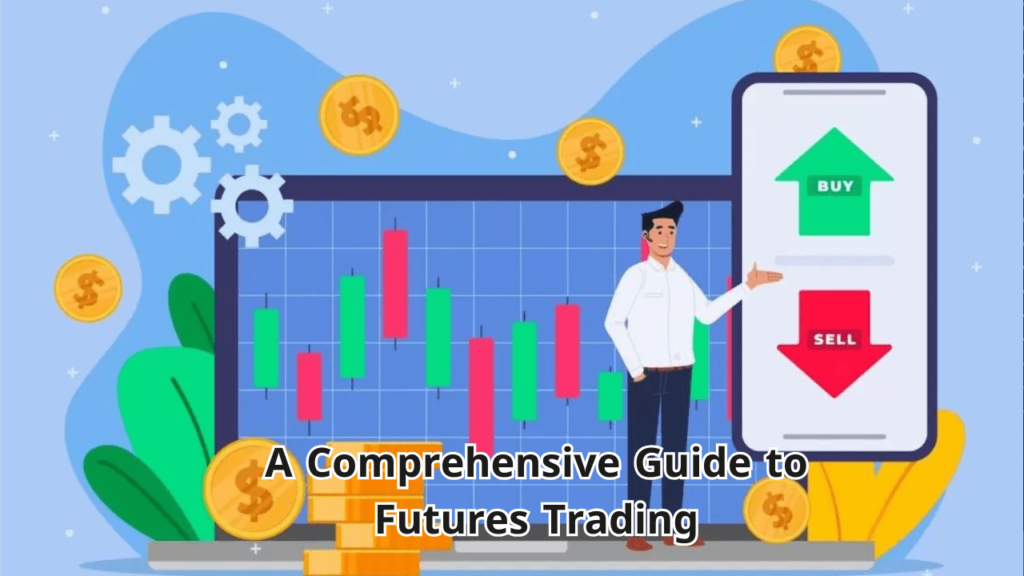Introduction
Futures trading is a popular method for hedging risk and speculating on the future prices of commodities, indices, and other financial instruments. This guide will provide an in-depth look at futures trading, covering its fundamentals, strategies, risks, and best practices. Whether you are a novice or an experienced trader, understanding the intricacies of futures trading is crucial for success.

1. What Are Futures Contracts?
Futures contracts are standardized agreements to buy or sell a specific asset at a predetermined price on a future date.
1.1. Key Components
- Underlying Asset: The commodity or financial instrument being traded.
- Contract Size: The quantity of the underlying asset.
- Expiration Date: The date on which the contract is settled.
- Price: The agreed-upon price for the asset.
1.2. Types of Futures Contracts
- Commodity Futures: Includes contracts for agricultural products, energy resources, and metals.
- Financial Futures: Covers contracts for currencies, interest rates, and stock indices.
2. How Futures Trading Works
Futures trading involves speculation on the price movement of the underlying asset. Traders can take either a long or short position.
2.1. Long Position
- Buying a futures contract with the expectation that the asset’s price will rise.
2.2. Short Position
- Selling a futures contract anticipating a decline in the asset’s price.
2.3. Margin and Leverage
- Futures trading typically requires a margin, a fraction of the total contract value, allowing traders to leverage their positions.
3. Key Futures Trading Strategies
Different strategies cater to various trading styles and risk appetites. Here are some common ones:
3.1. Trend Following
- Involves identifying and following market trends to capitalize on sustained price movements.
3.2. Spread Trading
- Entails taking long and short positions in related futures contracts to profit from price differentials.
3.3. Hedging
- Used by businesses and investors to protect against adverse price movements in the underlying asset.
3.4. Day Trading
- Involves buying and selling futures contracts within the same trading day to take advantage of intraday price fluctuations.
4. Technical Analysis in Futures Trading
Technical analysis plays a crucial role in futures trading, helping traders predict future price movements based on historical data.
4.1. Chart Patterns
- Identifying patterns like head and shoulders, flags, and triangles can provide trading signals.
4.2. Indicators
- Tools such as Moving Averages, Relative Strength Index (RSI), and MACD help in analyzing market trends and momentum.
4.3. Volume Analysis
- Examining trading volumes can confirm trends and indicate potential reversals.
5. Fundamental Analysis in Futures Trading
Fundamental analysis involves evaluating economic indicators, supply and demand factors, and geopolitical events that influence the underlying asset’s price.
5.1. Economic Indicators
- Data on GDP, unemployment, inflation, and interest rates can impact futures prices.
5.2. Supply and Demand
- Changes in production levels, inventory reports, and consumer demand affect commodity prices.
5.3. Geopolitical Events
- Political instability, trade policies, and natural disasters can cause significant price movements.
6. Risks Associated with Futures Trading
Futures trading carries substantial risks that traders must manage to avoid significant losses.
6.1. Market Risk
- The risk of adverse price movements in the underlying asset.
6.2. Leverage Risk
- While leverage can amplify profits, it also magnifies losses, potentially exceeding the initial investment.
6.3. Liquidity Risk
- The risk that a trader may not be able to enter or exit positions at desired prices due to low market liquidity.
6.4. Counterparty Risk
- The risk that the counterparty in a futures contract may default on its obligations.
7. Risk Management in Futures Trading
Effective risk management is vital for sustainable success in futures trading.
7.1. Diversification
- Spreading investments across different assets and markets to reduce exposure to specific risks.
7.2. Stop-Loss Orders
- Setting stop-loss orders helps limit potential losses by automatically closing positions at predetermined levels.
7.3. Position Sizing
- Calculating the appropriate amount to invest in each trade based on overall portfolio size and risk tolerance.
7.4. Regular Monitoring
- Continuously monitoring the market and adjusting strategies in response to changing conditions.
8. Choosing a Futures Trading Platform
Selecting the right trading platform is crucial for efficient futures trading.
8.1. Platform Features
- Look for platforms offering advanced charting tools, real-time data, and a user-friendly interface.
8.2. Security Measures
- Ensure the platform has robust security protocols to protect your investments and personal information.
8.3. Fees and Commissions
- Consider the cost structure, including trading fees, commissions, and margin rates.
Conclusion
Futures trading offers exciting opportunities for profit but comes with significant risks. By understanding the basics, employing effective trading strategies, and practicing robust risk management, traders can navigate this complex market with greater confidence. Continuous learning and staying updated with market trends are essential for success in the dynamic world of futures trading.